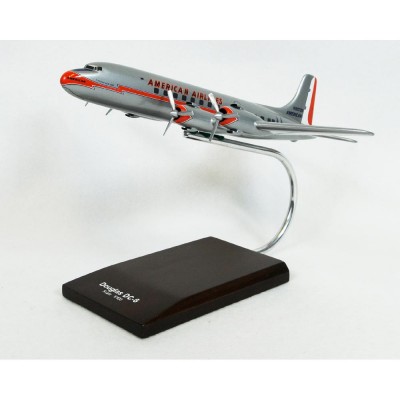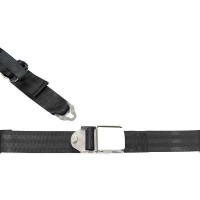NOTICE - WINTER WEATHER MAY CAUSE DELAYS IN SHIPPING | 877-4-SPRUCE
Dc-6B/C American Model
$205.95/Each
Part# 13-10976
MFR Model# KDC6AAT
MFR Model# KDC6AAT
Overview
|
Originally a response to a military airlift requirement near the end of World War II, the Douglas DC-6 was reworked after the war to compete with the Lockheed Constellation in the long-range transport class. Built between 1946 to 1959, the DC-6 became Douglas most successful four-engined piston airliner. More than 700 aircraft have been produced, and many still fly today in cargo, military and wildfire control roles. During World War II, the United States Army Air Forces (USAAF) was impressed with the C-54 Skymasters long range and payload capabilities, and thus commissioned the XC-112 project in 1944. The USAAF wanted an expanded, pressurized version of the popular C-54 with improved engines. However, by the time the XC-112 flew, the war had ended, and the USAAF requirement no longer stood. Douglas continued development nevertheless, converting the XC-112 into a civil transport which became the DC-6. The first production aircraft was delivered in March 1947. Douglas designed four basic variants of the DC-6. The DC-6A was optimized for freight work, while the equivalent passenger version was the DC-6B. The DC-6C was a convertible passenger/freight model. Military versions, many of which ended up in civilian hands later on, were designated C-118 under the Air Force and R6D1 under the Navy. American Airlines (AA), the worlds largest airline in terms of total passengers-miles transported and fleet size, operated the DC-6 from the 1940s until 1966. The aircraft was AAs answer to the Constellations of Trans World Airlines. The DC-6 proved to be an outstanding aircraft and was the backbone of AAs fleet in the late 1940s and early 1950s. It was the last piston-powered aircraft used by the airline. |
WARNING: Cancer and Reproductive Harm - www.P65Warnings.ca.gov. |
Q&A
Please note, Aircraft Spruce's personnel are not certified aircraft mechanics and can only provide general support and ideas, which should not be relied upon or implemented in lieu of consulting an A&P or other qualified technician. Aircraft Spruce assumes no responsibility or liability for any issue or problem which may arise from any repair, modification or other work done from this knowledge base. Any product eligibility information provided here is based on general application guides and we recommend always referring to your specific aircraft parts manual, the parts manufacturer or consulting with a qualified mechanic.








 FREE Shipping
FREE Shipping
